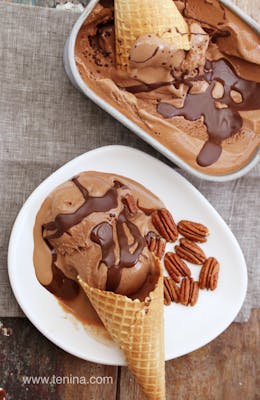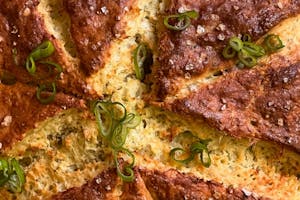The Science of Homemade Ice Cream
The Science of Homemade Ice Cream
"Never ask a woman who is eating ice cream straight from the carton how she's doing." — Unknown or dead
There are so many great quotes about ice-cream and the love of ice-cream. I have been in love with ice-cream since childhood. In my teens I found out that my dad created an award winning recipe ice-cream for Walls Ice Cream in his early career. He kept that a closely guarded secret for some reason! I have tried to emulate him ever since.
I love my Thermomix for creating custards to freeze into ice-cream, instant sorbets, traditional sorbets and of course the every popular Killer Vanilla Ice Cream, a meringue ice cream that needs no extra whipping after you have made it. (This is unusual in Thermomix circles if you are wondering why that should be of interest!)
I am often asked, what the difference is between Ice cream and gelato. They differ in several ways, including ingredients, texture, and serving temperature. Here are the key differences between ice cream and gelato:
- Ingredients: Ice cream is typically made with cream, milk, sugar, and sometimes egg yolks, while gelato is made with milk, sugar, and fewer egg yolks (if any). Gelato also often includes fruit purees, nuts, and other flavorings.
- Fat content: Ice cream typically has a higher fat content than gelato, because it contains more cream. This results in a creamier, richer taste and texture.
- Texture: Gelato is churned at a slower speed than ice cream, which results in a denser, smoother texture. Ice cream has more air whipped into it, which makes it lighter and fluffier. (This is generally not an option with a homemade gelato, these machines are extremely specialist.)
- Serving temperature: Gelato is served at a slightly warmer temperature than ice cream, which allows its flavors to be more pronounced. Ice cream is typically served at a colder temperature.
- Origin: Gelato is an Italian dessert, while ice cream has its roots in both Europe and America.
Overall, the main differences between ice cream and gelato come down to their ingredients, fat content, texture, serving temperature, and cultural origins.
Homemade ice cream offers a lot of advantages over purchased ice cream. Firstly, it provides unparalleled customisation, allowing everyone to tailor flavours, textures, and ingredients to their preferences, fostering creativity and personalised culinary experience. Additionally, homemade ice cream allows for the use of high-quality, fresh, and organic ingredients, steering clear of artificial additives found in most commercial varieties. This translates to a healthier and potentially more nutritious treat.
The process of making ice cream at home fosters a sense of connection and joy, as families engage in the preparation together, transforming milk and sugar and flavourings into something frozen and delicious and ready to eat! Beyond the sensory pleasures, there's a satisfaction in knowing exactly what goes into the dessert, promoting a conscious and mindful approach to food consumption. My grandkids eyes light up when they know there is ice cream to be churned! It is a load of fun, I highly recommend trying it.
In a typical ice cream recipe, a mixture of milk, cream, sugar, and flavourings is prepared. The sugar lowers the freezing point of the mixture, preventing it from freezing solid and resulting in a smooth, creamy texture. The combination of fats from the cream and milk forms an emulsion, trapping air during the churning process. This incorporation of air, known as overrun, contributes to the light and fluffy texture of the final product. If you are using only a Thermomix (no churner) then you will have an icier texture to the finished product, even if you blend it again after freezing the mixture. I have a lot of recipes that have both a churner method and a straight Thermomix method. I do love my churner for obvious reasons, but you can certainly get a great result by following a great Thermomix recipe. (her-hem!)
Join us for the best icecream recipes
Understanding the science behind homemade ice cream transforms a simple dessert into a delightful culinary experiment. By mastering the roles of ingredients and techniques, you can create creamy, flavorful ice cream right in your kitchen. Whether you're experimenting with unique flavors or sticking to classic favorites, this knowledge ensures each scoop is a testament to your culinary skills. Dive into the world of homemade ice cream and enjoy the sweet rewards of your scientific endeavors. For more tips and delicious recipes, subscribe to our newsletter and follow us on social media. Happy churning!
More from Thermomix and Cooking Tips

Tenina Holder
Tenina Holder is a wife, mother of five and grandmother of eight, who started cooking in the olden days before Thermomix was even a thing.
Tenina has become the premium go to source for all Thermomix expertise and of course fresh and easy recipes that work. Her cooking classes and foodie trips are sold out in literally hours, her cookbooks appear on the Australian best seller lists and her social reach is in the millions. Her Insider Club is the most fun you can have with a Thermomix and you really should join her! She believes chocolate, butter and salt are health foods. Her food positivity mantra is, eat everything, just not all at once!















